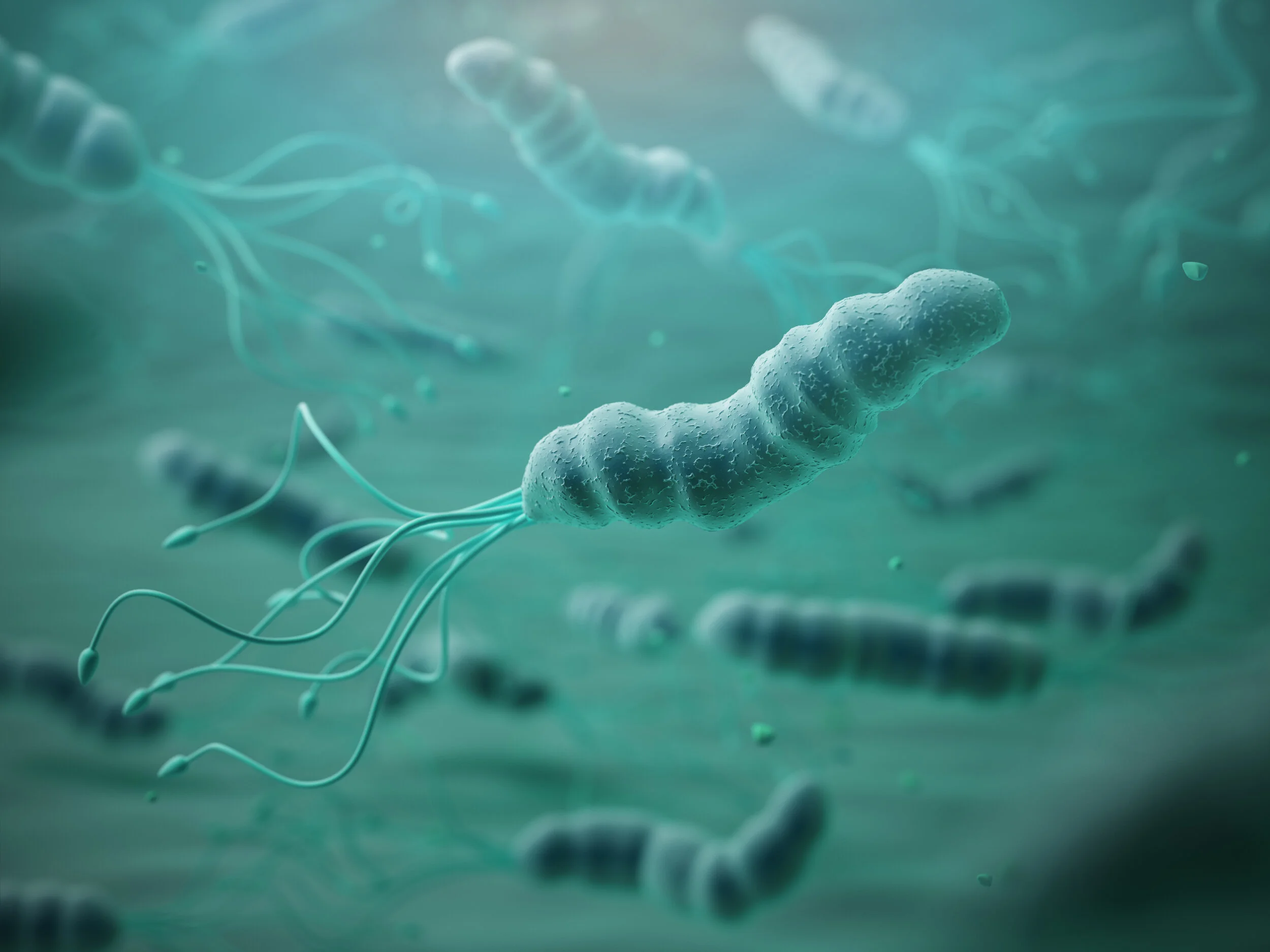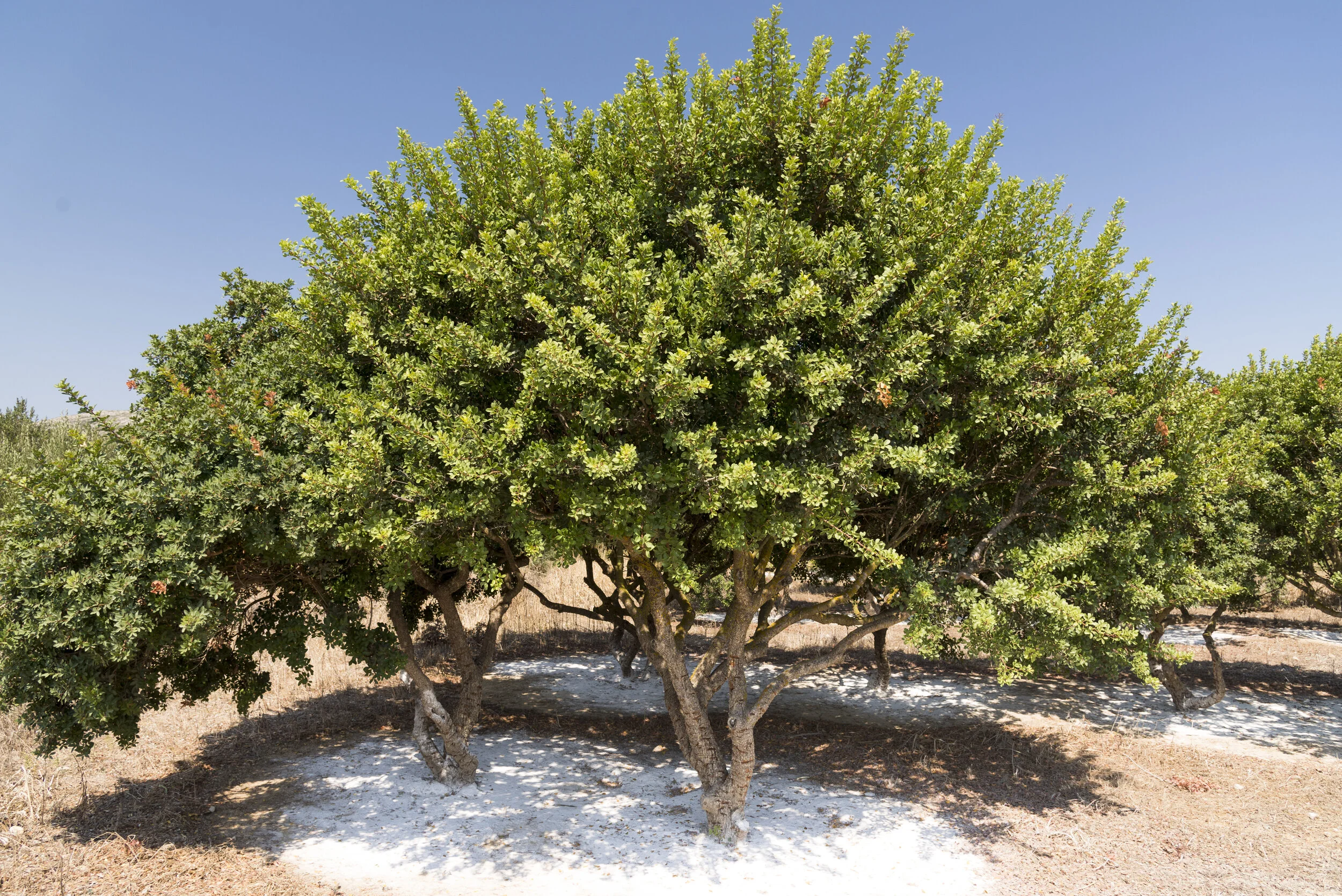‘Helicobacter Pylori’: more than just a stomach bug’?
By Sue McGarrigle ND DipION CNHC mBANT
It’s over 30 years since the Helicobacter Pylori bacterium, a helix shaped burrowing organism was identified by Dr’s Marshall and Warren in many cases of gastric inflammation, duodenal and gastric ulcers. Since then the more widespread effects of H.Pylori have been examined as to whether its role is a contributory factor in other human diseases or whether it may have a beneficial effect in some cases.
From birth to death humans are in contact with microbes. Helicobacter pylori is a spiral shaped bacterium which uniquely colonises the stomach and the first part of the duodenum and it has co-existed within humans for thousands of years. (1)The genus is derived from the ancient Greek ‘spiral’ or ‘coil. The definition of pylori means ‘of the pylorus’ or pyloric valve which is the circular opening leading from the stomach into the duodenum and is from an ancient Greek word meaning ‘gatekeeper.’ Our stomach lining is normally protected from highly acidic gastric juices by a thick layer of mucus and this is how H.Pylori survives by taking advantage of this and colonising the mucus lining.
H.pylori also contains an enzyme called urease which converts urea in the stomach into acid neutralising chemicals which it uses as a protection against stomach acid. This urea hydrolysis is used by GP’s to diagnose H.pylori through a breath test. H.Pylori also has several other mechanisms to avoid eradication through the influence of immune mechanisms. (2) More than 50% of the world's population harbour H. pylori in their upper gastrointestinal tract with infection more prevalent in developing countries. However, over 80 percent of individuals infected with it are asymptomatic and it has been suggested that it plays an important role in the natural stomach ecology. (1)
Within its niche H.Pylori can evoke pro-inflammatory signals which modulate a variety of functions locally and systemically and like other bacteria found in humans can be commensal- meaning it enjoys a symbiotic and beneficial relationship with us as its host. However responses may become more aggressive when infection takes hold due to particular strains of H.pylori and these in turn may cause substantial and ongoing immune and inflammatory responses.
There are many strains and variants of H.pylori but it is the cag+ strains prevalent in the Western population which have been identified as causing greater reactions with an increased risk of inflammation, damage of the stomach lining and ulcers. (3) Scientists believe transient infection is due to the faecal oral route through tainted food or water or possible transmission from the stomach to the mouth through gastro-oesophageal reflux and oral contact. (2) As late as 1982, when H.pylori was discovered by Drs Marshall and Warren, stress and lifestyle were considered the major causes of stomach and intestinal ulcers.
This was due to current beliefs that no bacteria could survive the harsh environment of the stomach. Dr Marshall proved that H. pylori caused gastric inflammation by deliberately infecting himself with the bacterium. (4) When additional patient biopsies were taken signs of inflammation were always present in the stomach lining close to where the bacteria were seen. BUPA state that in UK patients it causes more than 90% of duodenal (intestinal) ulcers and up to 80% of gastric (stomach) ulcers.
H.Pylori is also linked to gastric atrophy, stomach cancer and mucosa-associated lymphoid tissue lymphoma. (5) Because of this the World Health Organisation's (WHO) International Agency for Research into Cancer (IARC) has classified H. Pylori as a “Class- I-Carcinogen”. Smoking and high salt diets can exacerbate its effects.
However although H.pylori is at the root of gastric upset cag+ strains can protect against GERD (gastro oesophageal reflux disease) and its consequences such as Barrett’s oesophagus as well as oesophageal cancer partly owing to H.pylori’s effects on stomach acid secretions. GERD has been linked to asthma and due to rising hygiene, antibiotics and demographics H.pylori is now disappearing. Links are being established between this and the rise in asthma, allergic disorders and atopic dermatitis. H.Pylori also affects gastric hormones such as leptin and ghrelin which are involved in energy balance, appetite and satiety with scientists now examining further links of the disappearance of H.pylori to Metabolic Syndrome, obesity and Type 2 Diabetes. (6) One recent meta-analysis stated that Type 2 diabetes and insulin use in diabetic patients are significantly associated with a higher incidence of H. pylori eradication. (7)
Gastric juices infected with H. pylori travelling up the digestive tract might play a causative role in upper respiratory diseases due to local and systemic inflammatory immune responses to the infection; these include otitis media, rhinitis, sinusitis, oral disease, tonsillitis, pharyngeal, laryngeal, head, neck and lung cancers.
Although direct and/or indirect mechanisms might be involved in the association between H.pylori and upper respiratory tract diseases with various studies over the past two decades suggesting a relationship; the findings are still inconsistent. (8)
H.pylori can down regulate our immune responses through its extensive reactions with our immune system so has been the focus of attention as to whether it has a causative or protective role in autoimmune diseases. The results are mixed and far more research needs
to be done to determine its exact role. (9) The relationship between H.pylori infection and cardiovascular disease is a further issue. The possible mechanism may be through persistent local and systemic inflammation due to infection, platelet aggregation and autoimmune responses but there are limited studies to confirm this. H.pylori DNA has also been found in arterial plaques. (10)
Negative links to brain health
Cognitive function
Parkinsons
Alzheimers
Depression
Ultimately gastric carcinogenesis involves DNA damage which can be induced indirectly through free radical damage or directly through H.pylori by products. Gastric and serum ascorbic acid (Vitamin C) which helps to neutralise free radicals which damage healthy
tissue is found to be low in H.pylori positive cases, H.pylori also inhibits
tissue repair. Vitamin C rich foods or supplements of Vitamin C with flavonoids are helpful to give tissue support through antioxidant intake and prevent reinfection as it can inactivate urease which H.pylori depends on for its survival. (11)
Use of antibiotics has proved very effective in clearing an H.Pylori infection; however, low patient compliance due to the complexity of the therapy together with the side effects and the development of antibiotic resistance are the main reasons for failed treatments and have created the need for new strategies. Not only that but also the cost of using several combined antibiotics co- administered with a proton pump inhibitor to make the antibiotic activity more viable. (12)
Herbs which are seen to have a traditional impressive use as antimicrobials in the body may have little effect on H.pylori. A nutrient which has been studied extensively for its effects on a variety of diseases which includes H.pylori infection is Mastic gum specifically from the Greek island of Chios.
Chios Mastic (Mastic Gum) is the aromatic plant resin of the lentisc tree (Pistacia lentiscus var.chia) also known as the ‘Tears of Chios’ (as the bark is slit, the resin trickles out slowly creating crystal like tears) and is used as a food ingredient in the Mediterranean region. It is also used as a folk medicine by the local population of Chios for the relief of gastralgia and protection against peptic ulcer. (13) Greeks have used the resin as a natural chewing gum for centuries for oral hygiene and gingivitis, however once swallowed it is completely indigestible. Studies have indicated that processing Mastic by removing the sticky, insoluble (gum) polymer makes the active components, more available and effective. Using it in supplement form the benefit of the gum is easily lost in the grinding process unless the grinding is conducted at very low (cryogenic) temperature. The consistency of the powder in the capsule also needs protecting from the natural tendency of the gum to re-form (polymerise).
A Nottingham University study found that Mastic gum is active against H.pylori; Mastic gum induces a structural change that prevents its survival.
Even at lower concentrations, Mastic gum still inhibited bacterial growth significantly, its effectiveness equal to antibiotics. Clinically, Mastic gum has been effective in the treatment of duodenal ulcers and benign gastric ulcers. (14) In several studies using Mastic gum on ulcer patients, the original site of the ulcer caused by H.Pylori was shown to be completely replaced by healthy epithelial cells. Mastic gum powder produced a significant reduction in the intensity of gastric mucosal damage induced by many of the drugs used to treat ulcer pains such as aspirin, phenylbutazone and resperine and the gastric excesses associated with it. Medical trials also show that Mastic gum has tissue protective or anti-acid effects on the gastrointestinal system and clinical studies have emphasized the anti-inflammatory activity of Chios Mastic gum. This biological activity can be attributed to a variety of compounds within it. (15,16) Sulforaphane is a natural component found in cruciferous vegetables but is particularly rich in broccoli sprouts and cauliflowers. Studies conducted on humans infected with H.Pylori who were given a daily intake of broccoli sprouts found that gastric inflammation and H.pylori levels were lowered. However they did not eradicate H.pylori completely.(17)
The antibacterial activity of raw garlic is well documented. The incidence of stomach cancer is lower in individuals with a high intake of allium vegetables in developed and developing (high risk) countries. The inhibitory concentration against H.Pylori has been found to be up to 90% using the equivalent of a medium raw clove of garlic. (18)
Probiotics are live non-pathogenic microbial food products or supplements whose interaction with us can benefit our health status mostly through the balance of our friendly bacteria. During H.pylori infection several lactic acid strains of bacteria have been found to reduce the side effects associated with antibiotics, enhance eradication therapies, reduce gastritis and rebalance our digestive system with friendly flora. (19)
The biological cost and negative aspects of carrying H.pylori has been well documented but what might the downside be to human health with its disappearance. As such preliminary evidence shows it has a protective role in certain circumstances. The impact of change on our microflora and detection of same may give some insights into the prevention and treatment of chronic diseases.










